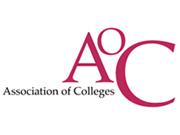Government proposals may drive adults and young people away from HE

Research from the Association of Colleges (AoC) suggests that the Government risks excluding a quarter of a million adults on inactive benefits from education, 75 per cent of which are women, due to course fees.
A survey of the number of college students receiving benefits, contained within the report, indicates that the changes will affect 248,000 students national over the age of 19 in English colleges. The fees are at £500-£1000 for a full time course per year.
The courses of study for these adults include accountancy, nursing, midwifery, catering, teaching, hairdressing, computer aided design, English, Maths, plumbing, sciences, engineering, construction, carpentry and information technology.
Students claiming income support, working families’ tax credits and housing benefits will be charged. Meanwhile, those claiming active benefits such as Job seekers allowance (JSA) and employment support allowance (ESA) will remain unaffected.
There will be some concessions for 19-24-year-olds who are studying to gain extra qualifications, however this is likely to only apply to a small minority of adults.
Entry and level 1 students who are able to progress to a level 2 (GCSE or equivalent) qualification will be funded if they meet this age bracket along with those who are gaining a full level 2 qualification next year.
However, students who are unable to progress to level 2 but gaining independent living skills and skills to access sheltered employment will be in the same situation as those aged 25 and over. The same also applies to students who have five A-C GCSE grades who want a vocational course.
A BBC report in July showed that the number of vocational courses has increased dramatically. The biggest increase was in GCSE equivalent level (Btec Firsts) which almost doubled from 2008-09. This year 364, 229 teenagers completed the qualification compared to 184, 584 two years ago, ranging from subjects such as applied science and business, hospitality and sport.
Recent figures from the Office of National Statistics (ONS) showed that the unemployment rate for the three months up to May 2011 fell to 7.7 per cent of the economically active population, with the total number of unemployment falling by 26,000 over the quarter to reach 9.33 million.
Joy Mercer, Association of Colleges’ Director of Education Policy said: “It is startling to see that 185,000 women are disproportionately affected by the proposals, as well as 33,000 disabled students.
“People receiving these types of benefits just can’t afford to pay hundreds of pounds out of their own pocket for courses; it doesn’t make any economic sense to block people on benefits from gaining the skills that will help them take that important step into the jobs market, or self employment, and to contribute as an active citizen and tax payer in any society.”
Ms Mercer described the students over 25 who are on inactive benefits as being priced out from higher education and that it was “short-sighted” with the government’s plans to increase the retirement age to 66, because people are working longer. The total number of students over 25 on inactive benefits is at 209,000.
“Our research is the best data currently available on this issue- Government has a duty to put a stop to their plans until they have undertaken their own studies. We do not think they understand the likely impact of these proposals,” Ms Mercer added.
Official figures from ucas.com state that mature students applying to higher education each year with a 12.1 per cent increase in applications in 2010 over 2009. The figures from January 15 2011, the date by which mature students should apply, saw an increase of applicants 21-24 showed a rise of 1.86 per cent and an increase of 0.32 percent from applicants aged 25 or over.
Ben Spencer






Responses